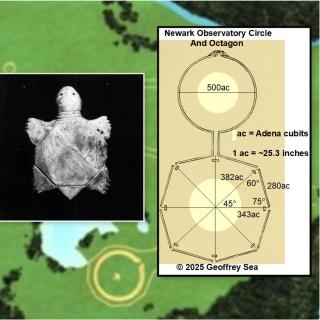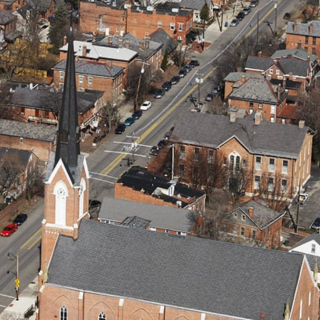Many people agree the Short North is not what it used to be. Once upon a time it was cool, soulful and local. It was more Paul Volker than Thomas Kinkade. The independent art galleries took center stage, but now they are being overwhelmed by expensive condos, overpriced t-shirts, $10 cocktails, and a desire to attract people who have lots of money to burn.
“It’s not really an arts district anymore, a lot of uniqueness is gone,” says Allen Geiner, who is helping spread the hashtag #SavetheShortNorth across social media. “Easton is great where it is. We don’t need the Short North to turn into another Easton.”
The Short North’s trend towards becoming a gated country club is plowing forward as development up and down the strip explodes. There are over a dozen developments in planning stages or under construction. Most are mixed-used, meaning a combination of condos, offices, retail and parking. Within the next five years the Short North could see hundreds of new residents and over 50,000-feet of new retail.
Screaming like giddy 13-year-old girls with the announcement of each new Short North mixed-use development are the usual suspects – the Mayor’s Office, City Council, the City’s Department of Development and their hand puppet the Columbus Underground.
Now comes Market Tower, a proposal to build a 35-story mixed-use glass skyscraper practically on top of the North Market, which in many aspects represents the old Short North as it is the last public market in Columbus.
The North Market’s property and building are owned by the City of Columbus, which chose The Wood Companies, Schiff Capital Group and the Schooley Caldwell architectural firm to finance and build Market Tower.
In its pitch to the city, The Woods Companies offered this nonsensical bovine poop to win the development.
“The North Market is a special place, a landmark. The community is appreciative and protective of the North Market. Its future must be imagined by people who have a deeply personal interest in its success,” wrote The Woods Companies. “The design of the Market Tower also embraces the need to add sufficient density and intensity of use to the site, creating synergy with the North Market…while keeping the authenticity and feel of the historic North Market intact and central to the experience.”
The City’s Department of Development is all in on this future “synergy.” A bourgeoisie skyscraper physically connected by an atrium to a 140-year-old former warehouse of brick façade, fading paint and an oversized rooster.
“You will not see the tower come down 10 stories, you have to go tall,” said City of Columbus Development Director Steve Schoeny to local media after the announcement of Market Tower. “It puts the North Market on good footing for its next 100 years.”
During this era of Columbus growth, preservation activists are pushing back against some of these head-scratching, out-of-place developments, and Market Tower is no exception, which many deem too tall for the Short North.
“Director Schoeny and North Market Executive Director Rick Wolfe’s main objective in this development is to honor their boss’s wishes, one being Mayor Andrew Ginther, and serve as the ring leaders to promote a characterless and unsuitable 35-story glass tower that sits in the center of a historic district,” says progressive activist Joe Motil, who led the fight against The View on Pavey Square in the campus area.
Motil says he has a problem with Schoeny’s comment that “You will not see (Market Tower) come down 10 stories, you have to go tall.”
He believes Schoeny was disregarding the fact Market Tower is planned for the North Market Historic District meaning the tower must first receive approval from both the Downtown Commission and the City’s Historic Resources Commission architectural review board, which is an office within the City’s Department of Development.
“I think Schoeny was and probably is trying to circumvent the Historic Resources Commission (HRC) because he knows the tower is too tall and the HRC will most likely question the non-conforming height of this proposal. If he succeeds, he will also prohibit true public input on this proposal,” says Motil.
Motil, who once served on the HRC, asked the City whether it will adhere to City Code by allowing the HRC to review the proposal and decide whether the 35-story tower deserves a Certificate of Appropriateness.
The City responded to Motil saying Director Schoeny has informed the developers they must go through the normal approval process by informing the HRC and the Downtown Commission of their intent and process.
But is there any hope of saving the Short North considering the Market Tower developers have already showered our City leaders with cash?
During the 2015 Mayoral and City Council campaigns, says Motil, together The Woods Companies and Schiff Capital Group contributed $19,600.
There’s more impropriety. Schooley Caldwell architectural firm President and CEO Robert Loversidge happens to be a member of the Downtown Commission while other principles of this firm have contributed $5,850 to Mayor Ginther and City Council.
“It is the duty of the Historic Resources Commission to protect the unique historical and architectural character of its districts,” says Motil. “But you have a Development Director (Steve Schoeny) who has already publicly announced what his preferences are in terms of height for this tower. It is apparent that he too, who is appointed by the Mayor, serves his interests by making it clear to the HRC what he expects.”



